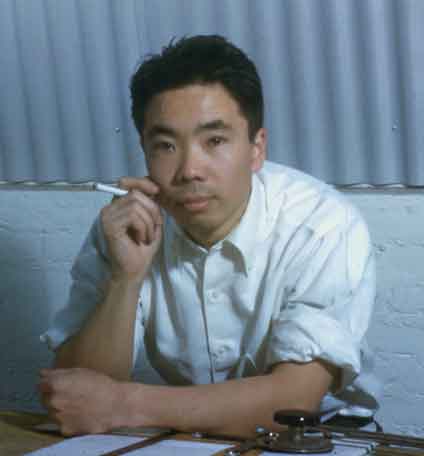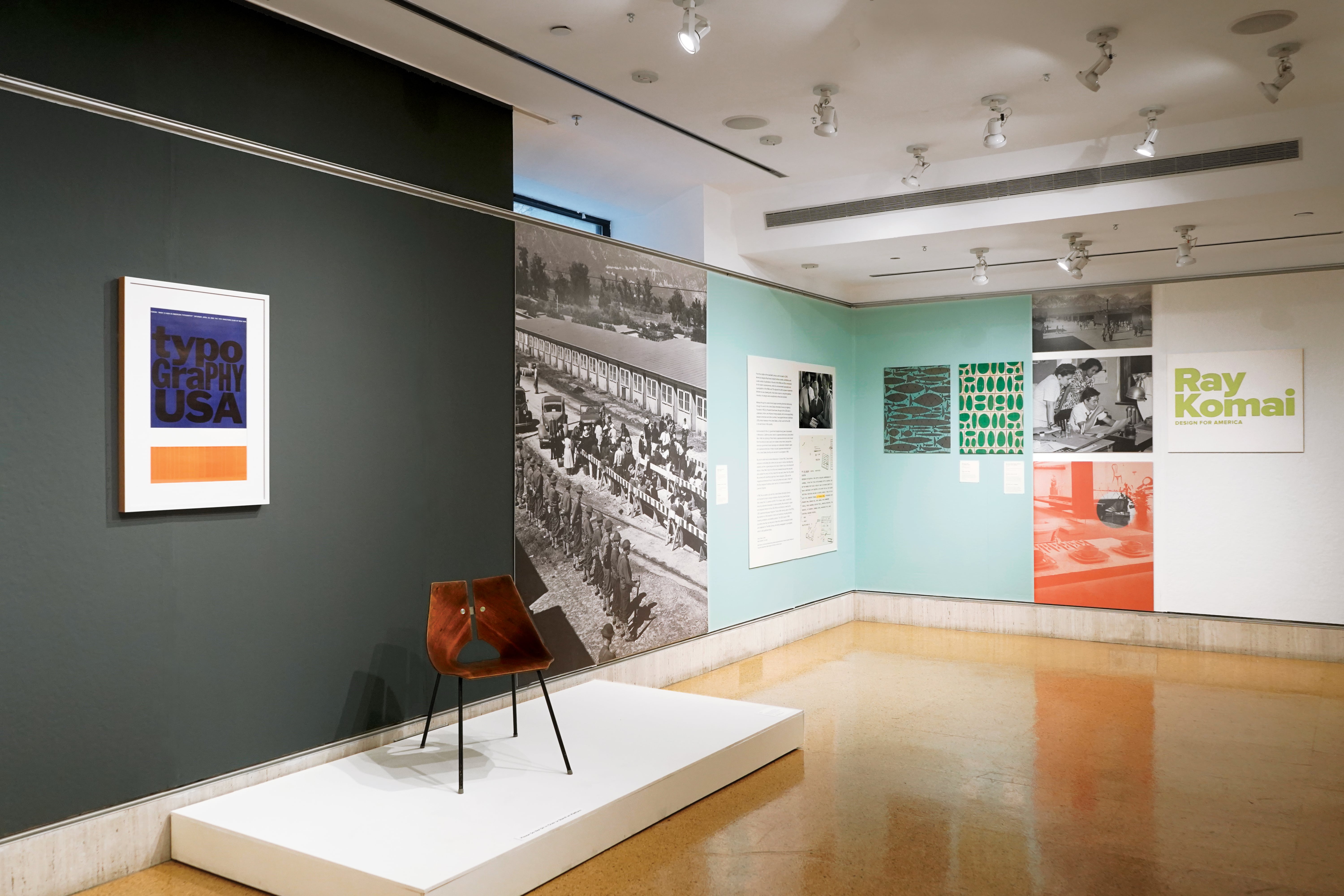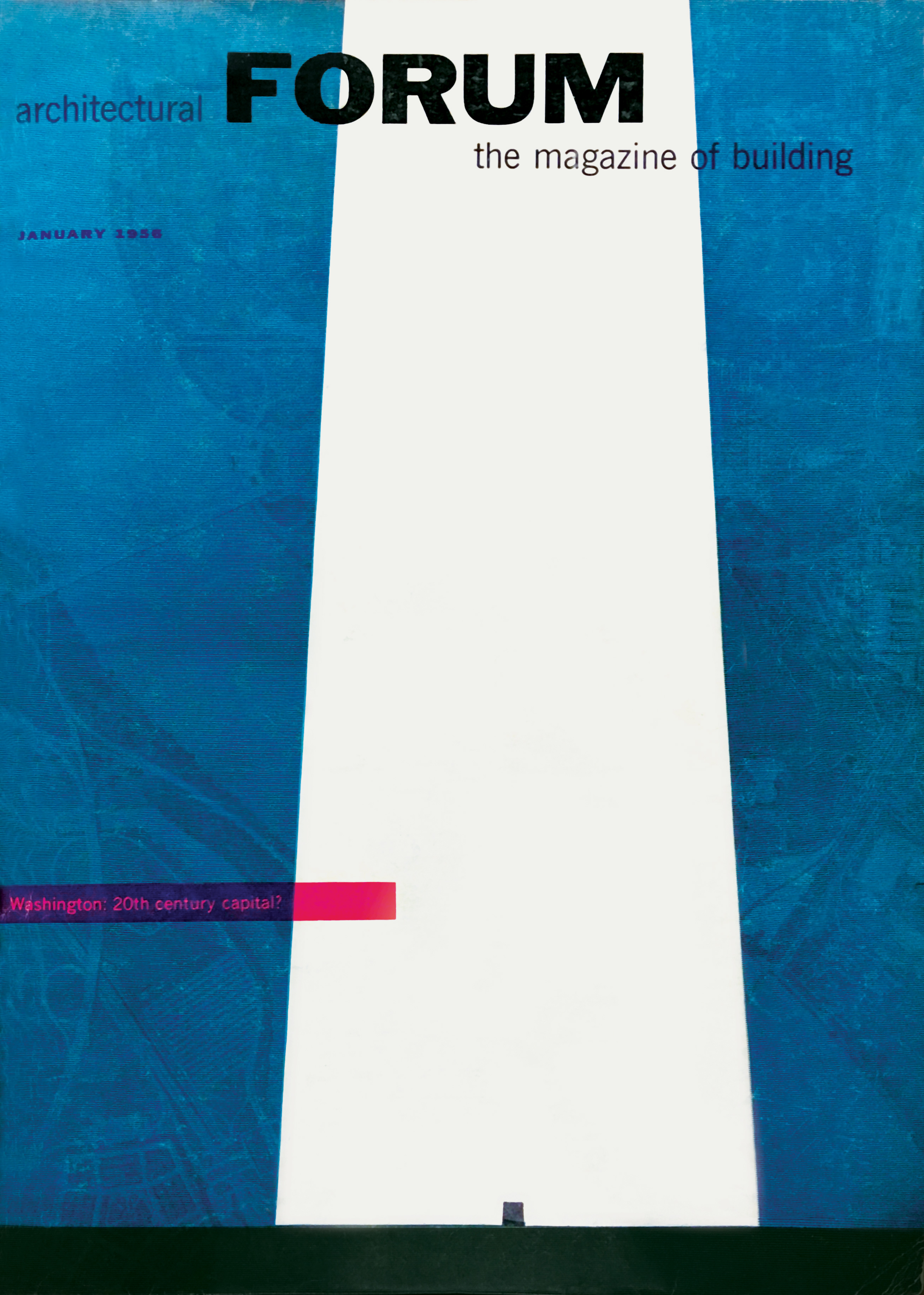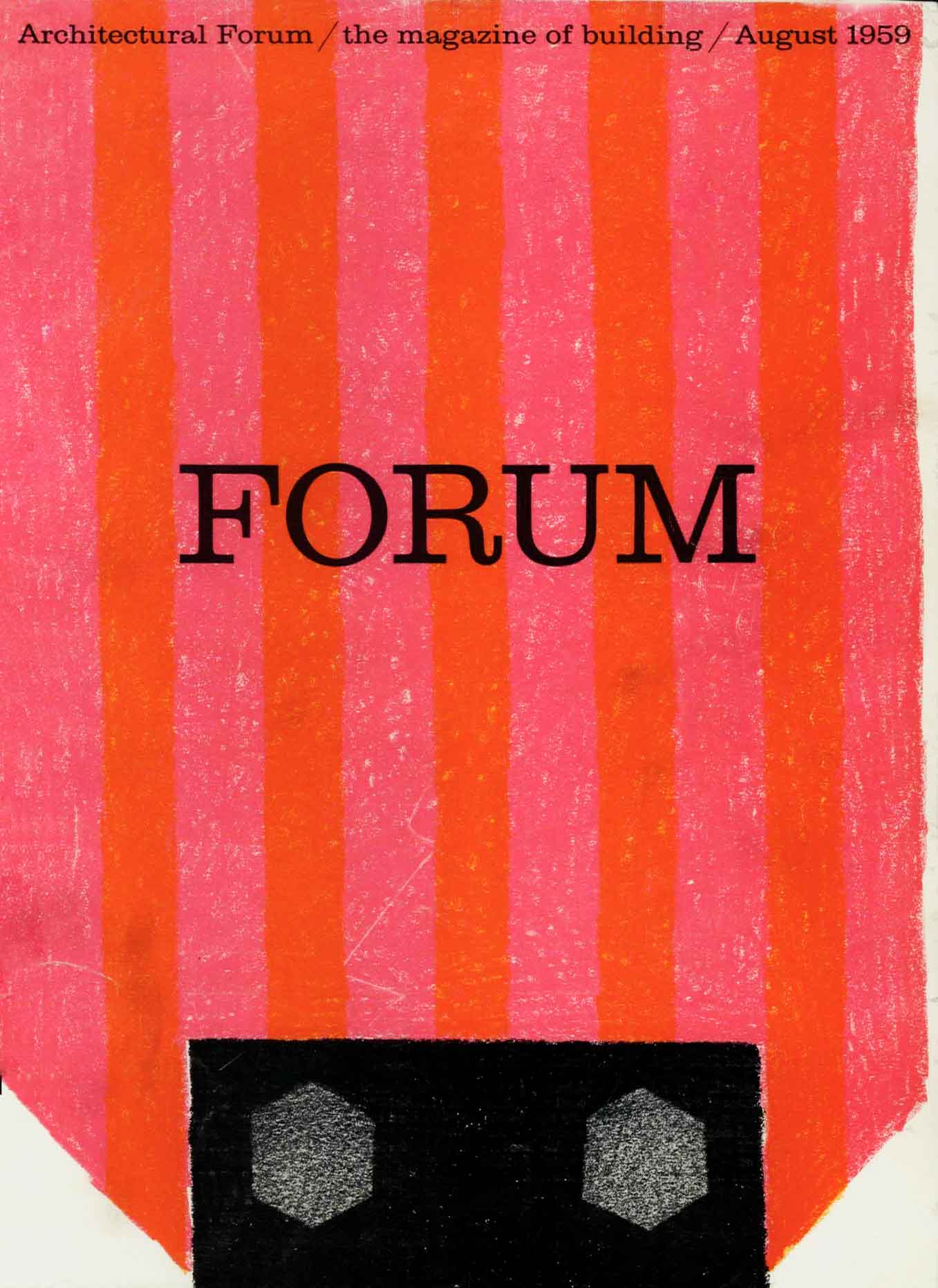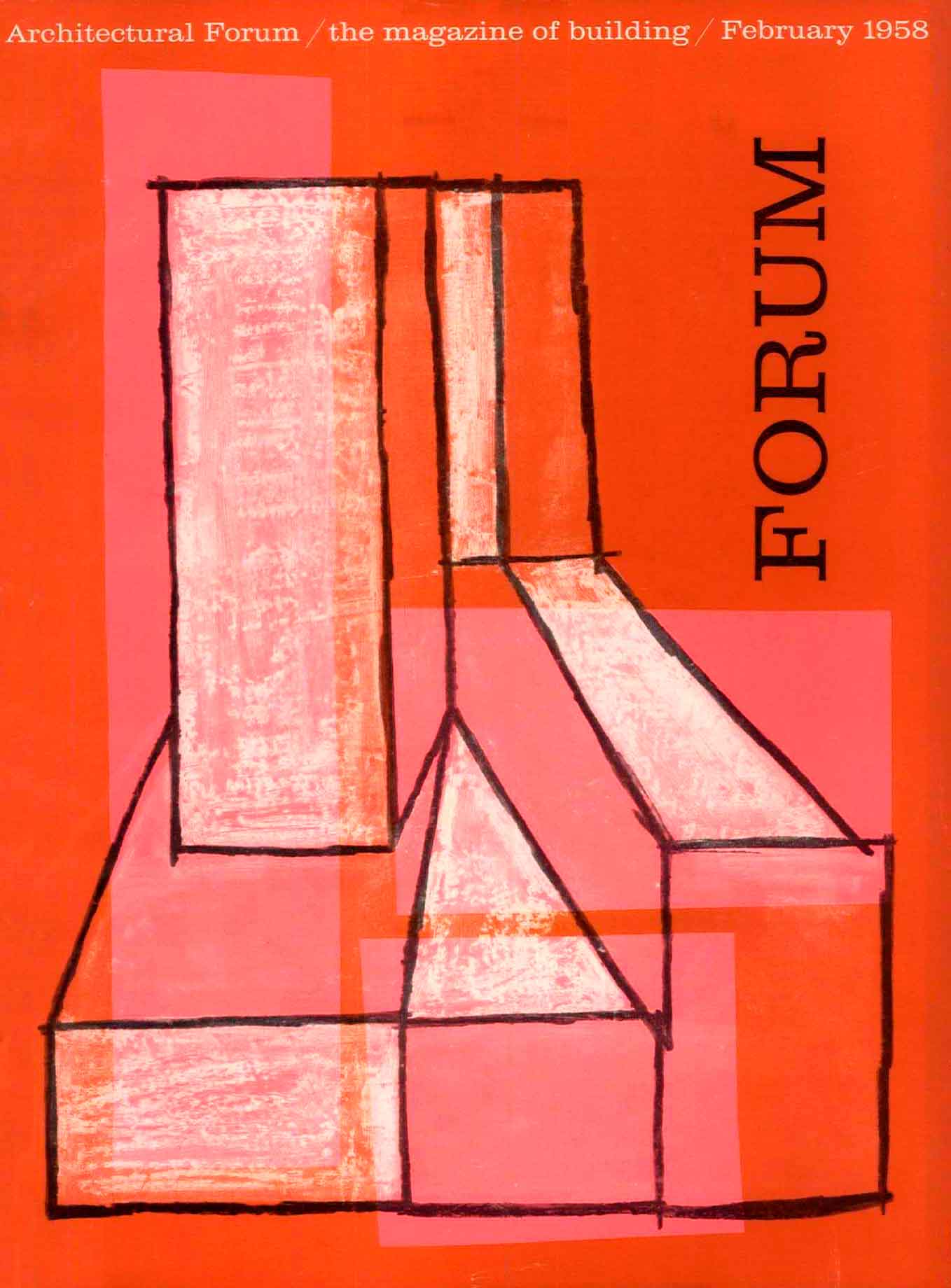Ray Komai, a relatively unknown American graphic and exhibition designer, is overlooked in part because much of his career was with the United States Information Service (USIS) outside of the U.S. His work for the USIS could not be seen in the U.S. because of federal laws against distributing work from the USIS domestically. However, his design is notable and his career was influenced by dramatic cultural and political events. He is one of a group of Japanese-American artists and designers, including Isamu Noguchi, Tomoko Miho, and Ruth Asawa, who were incarcerated in prison camps during World War II. This group made important contributions to American visual arts, despite their treatment by the US government during the war. Komai’s career invites reflection on immigration, patriotism, and bias.
This website focuses on one body of work from Komai's time in New York City, before he left the US to work for the USIS in India. These cover designs for Architectural Forum magazine have an obvious visual appeal: some covers look like what we expect of mid-century design, while others are late enough and personal enough that they also have a bluntness and slight awkwardness that signals evolving design trends. The covers track a personal aesthetic course between contemporary visual art and the practical demands of commercial design. Some look like Philip Guston paintings (February 1958 and November 1960) and others suggest Pop Art (March and October 1963). Cover lettering and illustrations recall the work of illustrator Ben Shahn and artist Edward Ruscha. May 1962’s cover (Komai’s favorite) appears to originate in Komai’s own intuitive respect for structure and practice of typography.
Admired by his colleagues for his industry, humor, and talent, Komai’s design work was meticulous yet expressive. His spirit and innate sense of graphic contrast and balance attracted considerable attention and many commissions. A survey of Komai’s work reveals a career that transcended narrow national and racial stereotypes. After a long career associated with renowned design offices and projects, he died in Switzerland in 2010.
In 2019 Fordham University in New York hosted an exhibition of Komai’s work, documented here. This site focuses on Komai’s cover designs for Architectural Forum magazine in the 1950s and 60s in more detail than was possible in the exhibition.
RAY KOMAI: Architectural Forum covers, 1953–1963
Contributors:
Angela Voulangas and Doug Clouse
